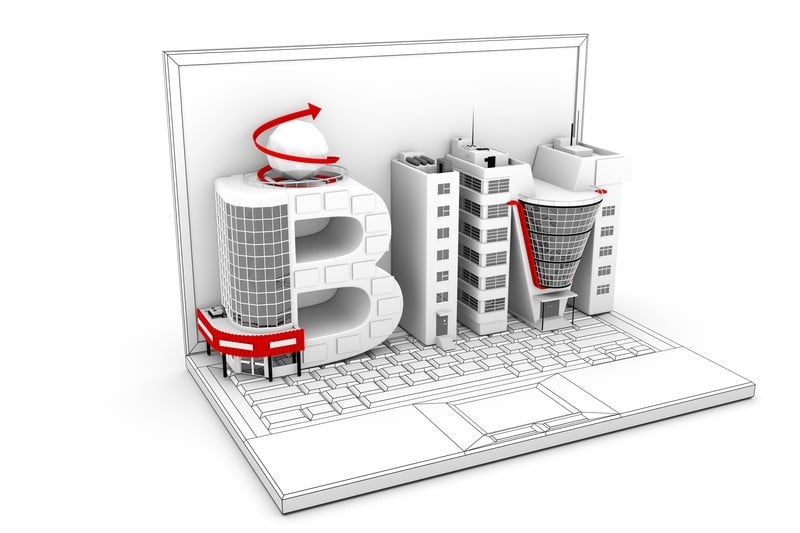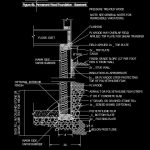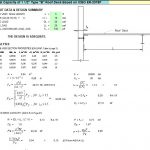
Introduction of Building Information Modeling (BIM) Technologies in Construction
22 August 2018Table of Contents
Introduction of Building Information Modeling (BIM)
Technologies in Construction
1. Introduction
BIM (Building Information Modeling) — information modeling of buildings, which allows one to model not only the construction objects themselves, but also their characteristics, as well as all possible changes in time — is persistently introduced to the construction industry [1–6].
In practice, the use of BIM technology is integrated into all stages of production and life support of buildings: data collection, design work, construction, equipment, operation, repair work and demolition. That is, all the necessary information is located in the computer models: architectural, construction, technological, economic, etc.
In the work of Z. Pezeshki and S. A. S. Ivari [7], a classification and review of the literature from 2000 to 2016 on building information modeling (BIM) are provided. It is shown how various methodologies of BIM were developed during this period. Three main types of future trends of methodology development of information modeling and related research and development are noted by the authors:
• BIM methods, as a rule, are developed in the direction of expertise.
• It is proposed to implement various social science methodologies using BIM as another type
of methodology.
• The ability to constantly change and learn is the driving force of BIM’s methodologies and
will become the key to future intellectual applications.
Work [8] is directed towards the development of the discriminant model of readiness for introduction of BIM to a construction organization. For empirical check of the proposed model, the authors received 164 questionnaires filled out by construction organizations with the involvement of contractors, architects, heads of construction and engineers.
In work [9], the issue of application of cloud technologies as a necessary tool for further development of building information modeling technologies is considered. The issues of data management, introduction of new technologies and interaction of participants of the BIM-process are analyzed.
In review [10], the main focus is on the identification of the future tendencies for development of the process of building design, taking into account building information modeling (BIM) technology.
The authors note that nowadays the use of BIM technologies is widely implemented both into the construction industry, and into the academic environment. The benefits of BIM, such as systematicity of the modeling process, a powerful platform for interactive visualization and standardized data exchange are shown in the study.
2. Materials and methods
The result of the building information modeling is an object-oriented digital model both of the whole object and the process of its construction. First of all, it allows one to assemble the components and systems of future construction created by different specialists and organizations in the virtual mode, selecting them according to purpose, perform corresponding calculations, alignment and coordination, check their viability, functional suitability and operational qualities in advance, and also avoid internal disagreements (collisions) unpleasant for designers [2].
The most important advantage of BIM technology is the complete interdependence of all types of information, each of which is updated automatically upon a single introduction of any changes . And the created information model may be a computer model of a real building throughout its life and reflect all the changes and additions of the current and future state.
The main competitive quality of BIM technology is significant cost savings, first of all, due to theincrease in speed of design; besides it is possible to talk about creation of quite complex and unique objects . The process of information modeling divides the design work into two stages:
1. Development of primary design objects, both construction (windows, doors, floor slabs, wall
types, roof types, etc.), and elements of different systems (heating, ventilation, electricity, water
supply, sewerage, etc.), which include all necessary technical and economic characteristics.
2. Modeling of the object itself, which occurs in the form of customary formation of technical
drawings and specifications of layouts, sections, facades, three-dimensional views and other forms of
information presentation.
In March 2015, the «Plan of a step industrial and civil construction» was approved by the order of the Ministry of Construction and Housing and Communal Services of the Russian Federation.
Implementation of this plan is associated with the significant changes in the whole construction industry, affecting every smallest part of it. Besides, a detailed interaction of these smallest parts is an essence of BIM, as huge reserves lie in maximum automation when moving information from one link in a significant reduction in the project cost [11].
According to the above mentioned plan, since 2020, the use of information modeling technologies (BIM) in the design, construction and operation of buildings and structures constructed from the budget of the Russian Federation will be mandatory.
A uniform information space shall be built on a platform of national standards, and these standards have to harmoniously fit into already existing world standards. All construction products, structural elements, materials and types of work have to be connected with this standard using electronic qualifiers. It is necessary to connect all object element libraries with the electronic directories of cost indexes and labor costs. And at present, this work has already begun [11].
3. Conclusion
Information systems in the organizations and construction industry enterprises, functioning within the concept of information modeling, require significant expenditures for the introduction of a new approach towards design and support of the construction process. Certainly, the details of a new approach can be accepted only after a careful elaboration of pilot projects, which should identify the ways and means of verification of the regulatory and technical base, as well as economic indicators.
References
[1] Ferrandiz J, Banawi A and Peña E 2017 Evaluating the benefits of introducing “BIM” based on Revit in construction courses, without changing the course schedule Universal Access in the Information Society doi: 10.1007/s10209-017-0558-4
[2] Mainicheva A Y, Talapov V V and Zhang G 2017 Principles of the information modeling of cultural heritage objects: the case of wooden Buddhist temples Archaeology, Ethnology & Anthropology of Eurasia 45(2) 142–148 (in rus) doi: 10.17746/1563-0110.2017.45.2.142-148
[3] Sharmanov V V, Simankina T L and Mamaev A E 2017 BIM in the assessment of labor protection Magazine of Civil Engineering (1) 77–88 doi: 10.18720/MCE.69.7
[4] Luo H, Gong P 2015 A BIM-based Code Compliance Checking Process of Deep Foundation Construction Plans Journal of Intelligent & Robotic Systems 79(3–4) 549–576 doi: 10.1007/s10846-014-0120-z.
[5] Chegu Badrinath A, Chang Y, Hsieh S 2016 A review of tertiary BIM education for advanced engineering communication with visualization Visualization in Engineering 4(1) doi: 10.1186/s40327-016-0038-6.
[6] Soust-Verdaguer B, Llatas C, García-Martínez A 2017 Critical review of BIM-based LCA method to buildings Energy and Buildings 136 110–120 doi: 10.1016/j.enbuild.2016.12.009.
[7] Pezeshki Z, Ivari S A S 2016 Applications of BIM: A Brief Review and Future Outline Archives of Computational Methods in Engineering doi: 10.1007/s11831-016-9204-1
[8] Lee S, Yu J 2017 Discriminant model of BIM acceptance readiness in a construction organization KSCE Journal of Civil Engineering 21(3) 555–564 doi: 10.1007/s12205-016-0555-9
[9] Alreshidi E, Mourshed M and Rezgui Y 2016 Requirements for cloud-based BIM governance solutions to facilitate team collaboration in construction projects Requirements Engineering doi: 10.1007/s00766-016-0254-6
[10] Chi H-L, Wang X and Jiao Y 2015 Archives of Computational Methods in Engineering 22(1) 135–151 doi: 10.1007/s11831-014-9127-7
[11] Kapitonova T G 2016 BIM-technology as a near-term prospect of the construction industry Architecture – construction – transport: Materials of the 72nd scientific conference of professors, teachers, scientists, engineers and post-graduates of the University (SaintPetersburg: SPbSUACE) 1 pp 18–22 (in rus)
Source:
M A Milyutina
Saint Petersburg State University of Architecture and Civil Engineering, 4, 2nd Krasnoarmeyskaya St., Saint-Petersburg, 190005, Russia








